Zeppelin and zeppelins
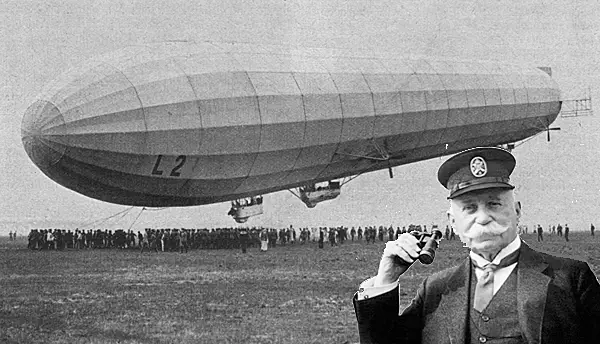
Count Ferdinand von Zeppelin in front of the rigid airship L-2
with the exception of the alphabet and the printing press,
those inventions
that shorten distances
have brought the greatest benefit to civilization." Thomas Babington Macaulay
His childhood and youth were not much different from the childhood and youth of other residents of Germany, and the quiet life of a military garrison in peacetime did not particularly fascinate him, then a young lieutenant in the Württemberg army. His creativity demanded something more from life than the routine of military exercises and parades and when he died, the whole world mourned the loss of a man whose genius and foresight had transformed the airship into an aerial vehicle that proved invaluable in both peace and war time.
He lived to see hundreds of airships built according to his designs, and his personality was so closely intertwined with the creation of these aircraft that even now, more than a century later, all over the world all airships are considered precisely synonymous with his name. This is an unconscious, but nevertheless quite appropriate tribute to the man who made it possible to use movement in a new environment for humans - air.
Thanks to his energy and engineering talent, during the three years before the First World War, the German airship transport company transported more than 34 thousand passengers and several tons of mail without a single accident or damage to the aircraft!
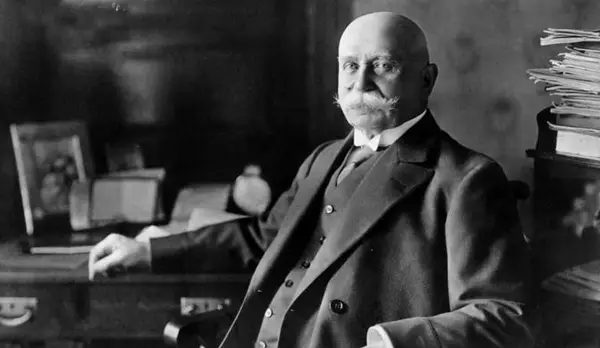
Count Ferdinand von Zeppelin. Source: Bundesarchiv
This man, a third of whose life occurred in the “Golden Age of Airships”, is Ferdinand von Zeppelin, the son of the Württemberg minister, marshal of the royal court and textile manufacturer Friedrich Jerome Wilhelm Karl Count von Zeppelin, inventor of the famous rigid Zeppelin airships and founder of the company Luftschiffbau Zeppelin, which, after a short break, still exists today.
Just a little biography
He was born on July 8, 1838, on an island in Lake Constance, located on the border of Germany, Switzerland and Austria, studied at the military academy in Ludwigsburg, near Stuttgart (Baden-Württemberg), and became an officer in the Württemberg army. In 1858, he was awarded the rank of lieutenant in the Württemberg army, and in the same year the command granted him leave to study political science, mechanical engineering and chemistry at the University of Tübingen. However, due to the urgent mobilization of the outbreak of the Austro-Italian conflict (1859), he had to stop his studies and was drafted into the engineering corps.
Note. Austro-Italian conflict or Sardinian War (April 26 – July 12, 1859). At that time, the still young king of Sardinia, Victor Emmanuel II of Savoy, entered the war against Austria for Lombardy, which was then part of the Austrian Empire. With the help of France, this war was won, and Lombardy (except for several provinces) was included in the Kingdom of Sardinia.
Civil War in the USA
In 1863, a 25-year-old army officer and native of Württemberg, believing that much could be learned from the ongoing Civil War in the United States, requests and receives permission from King William I of Württemberg to travel to the United States to serve as a military observer during the War Between the American States.

Ferdinand von Zeppelin (with rifle) in northern Minnesota
In May of that year, he crossed the Atlantic to serve as an observer for the Union Army of the Potomac in Virginia, receiving a permit signed by President Abraham Lincoln himself that allowed him to travel with the Northern armies.
Young Ferdinand would spend nearly six months in the New World, from May 6 to November 19, 1863, when he boarded the Cunard China.* in New York for his return voyage to Europe, where he would continue his military career through two European conflicts, the Austro-Prussian and then the Franco-Prussian Wars, retiring in 1890 with the rank of lieutenant general. Now with free time, he was free to begin work on the burgeoning technical innovation for which he would become famous: the rigid, controlled aircraft that became known as the Zeppelin...
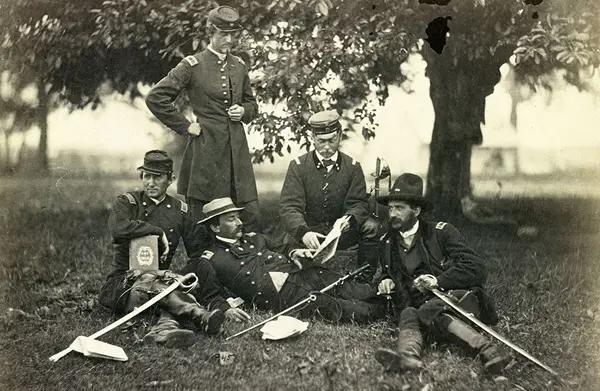
Zeppelin in company with officers at the headquarters of the Army of the Potomac. Photo by Alexander Gardner, Library of Congress
It should be noted here that during the siege of Paris during the Franco-Prussian War of 1870-1871, he tested the use of balloons in military conditions, with which it was possible to carry mail and people from Paris, which was under siege by the Germans. This impressive experience, as well as a lecture he heard from the General Director of the Postal Service of the German Empire, Heinrich von Stephan, on the topic “World Post and Balloon Travel” led Zeppelin in 1874 to the idea of building his own airship, which was first expressed in his diary entry.
Note. It is believed that he saw his first hot air balloon in St. Paul, Minnesota, far from the battlefields of the Civil War, where on August 19 he made his first aerial ascent with balloonist John Steiner and reached an altitude of 600 feet (182,88 meters) at tethered ascent. In addition, at least one source claims that while serving in the Union Army, he observed Thaddeus Lowe's efforts to inflate balloons for the Union army.
Thaddeus Lowe (1832–1913) – professor, first aerial reconnaissance aeronaut during the American Civil War, scientist and inventor. He built and piloted his first tethered balloon in 1857 on a small farm in New Jersey. He actively promoted the theory of transatlantic balloon flights. John Steiner. Despite his early popularity as one of the pioneer aeronauts, the details of his life are little known.
As mentioned above, during the ascent in Minnesota in 1863, one of its passengers was the young Count Ferdinand von Zeppelin, who saw the world from the air and later claimed that this flight awakened his interest in aeronautics. Steiner also patented several improvements to gas generators, and his ideas continued to influence the development of lighter-than-air vehicles. One of Steiner's patents, issued back in 1869 for one of the generators, was mentioned by Boeing in a 1989 patent for an improved method for producing hydrogen. His name was last mentioned in an American newspaper in 1875.
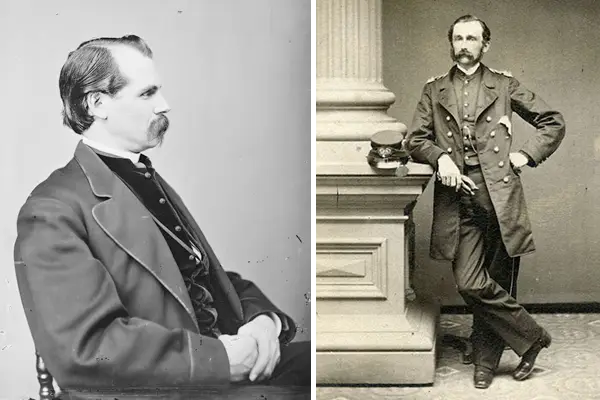
Thaddeus Law (left) and John Steiner (right)
"Blimp-train"
So it was only after his retirement from the army in 1890, at the age of 52, that Zeppelin was able to devote himself more fully to the problems of lighter-than-air flight, and 10 years later he would build his first airship, the Luftschiff Zeppelin 1 (LZ-1).
But let's start from the beginning...
Having retired, but still remaining a military man in spirit, he viewed the idea of lighter-than-air vehicles primarily as a military man and saw in it a serious contribution to the military power of Germany, hoping that his idea, subsequently embodied in technology, would be accepted into service with the imperial army and fleet, and his first efforts were aimed at gaining their support.
But he was seriously frustrated by the lack of support for the project from the military at an early stage, and, being a German aristocrat, he treated attempts to commercialize his ships with a certain degree of disdain, considering the idea of transporting paying passengers to generate income unworthy of either his ships or himself.
In 1894, at the age of 56, with the help of engineer Kober, he nevertheless completed the design of his airship and presented these projects to a special commission created by the most famous German scientific authorities, and was greatly disappointed with the decision of this commission, which, although it did not find significant shortcomings in Count's design, still did not recommend building airships according to Zeppelin's plans.
This first airship of his was an air gondola consisting of ordinary spherical balloons connected to each other in the same way as train cars are connected, which caused a whole storm of ridicule and caricatures in German newspapers.
Three years later, in 1897 in Berlin, the first airship with a rigid base was lifted into the air, the creator of which was a subject of the Austro-Hungarian monarchy, David Schwartz, who died shortly before this event. And although the first flight of a rigid-frame airship almost ended in disaster, Zeppelin still appreciated the advanced ideas embedded in the design of this airship.
Note. Before moving on to the creation of the first rigid airship, it should be noted that Ferdinand von Zeppelin only improved, and did not invent from scratch, a cylindrical flying machine with a rigid frame. His final designs for the future airship were based on ideas originally conceived by David Schwarz, a Hungarian aeronautics pioneer serving in the Austro-Hungarian army, who came up with the idea of creating a rigid airship that would be made entirely of metal.
But, unfortunately, Schwartz did not live to see the first flight of his airship, and then Ferdinand von Zeppelin, who saw the future of aeronautics not in soft controlled balloons, but in aircraft with a metal frame capable of transporting passengers and cargo over long distances, bought the rights to the development Schwartz with his widow.
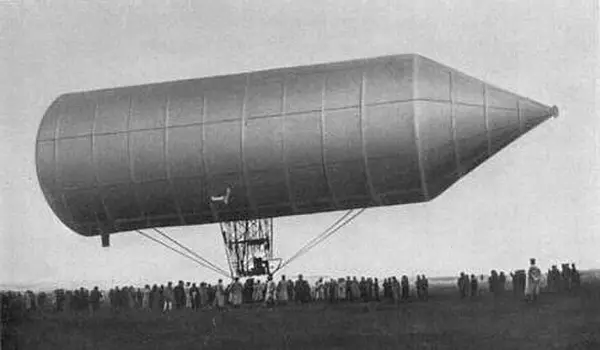
David Schwartz's rigid-hulled airship built in 1897
Zeppelin LZ-1
Having failed with the "airship-train", he worked on the airship, but with a rigid frame, with renewed vigor and after several false starts, including even a couple of almost catastrophic tests, by 1898 the first examples of the rigid Zeppelin airship were already reliable enough to attract interest from the army and, despite many difficulties, he manages to attract the necessary private capital, and in the same year Zeppelin founded Gesellschaft zur Förderung der Luftschiffahrt (Society for the Promotion of Airship Flight), after which construction of the first zeppelin begins.
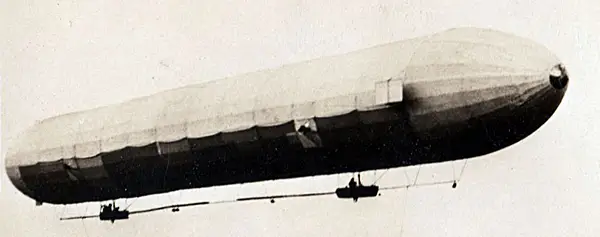
Zeppelin LZ-1
In the new design, lifting gas cylinders made from cow intestines were placed in a 128-meter-long metal frame made of aluminum frames* and stringers*, covered with a fabric shell with a smooth surface. In the supporting structure of the airship, the so-called. “scientific metal” is aluminum, the price of which dropped significantly by the end of the 14,2th century. By the same time, the new Daimler engine with a power of XNUMX hp had also passed successful tests. pp., running on gasoline.
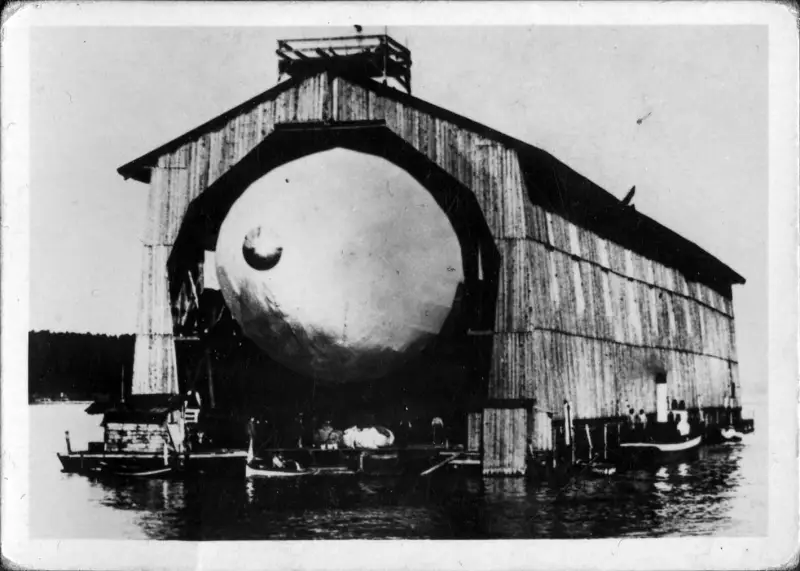
LZ-1 in a floating hangar on Lake Constance
Finally, on July 2, 1900, LZ-1, the first rigid airship built by Zeppelin and his team, took off over Lake Constance for its first test flight, lasting only 20 minutes, and flew five kilometers, reaching a speed of 21 kilometers per hour. A total of three lifts were made on this model before it was dismantled later that year for financial reasons and the operating company was wound up. Zeppelin's aeronautical innovations continued to be rejected
public, and Emperor Wilhelm II even called Zeppellin "the dumbest of all southern Germans».
Note. LZ-1 (Luftschiff Zeppelin-1) had a length of 128 meters, a diameter of 11 meters, and 17 spherical gas cylinders made of rubberized cotton material contained about 9 cubic meters of hydrogen. Suspended under the hull were two metal nacelles - fore and aft - and each nacelle housed a four-cylinder water-cooled Daimler petrol engine producing 500 hp. With. and weighing more than 14,2 kilograms, each of which was connected by long shafts to two aluminum propellers mounted on either side of the hull. On this airship the pitch* it was adjusted not by elevators, but by means of a special sliding weight suspended under the hull, which could be linearly moved back and forth. There was no stabilizing tail on it either.
To summarize, we can say that the LZ-1 turned out to be too heavy, the sliding weight that controlled the pitch of the device often jammed, and the airship itself suffered from poor controllability due to the lack of tails on it. In addition to the shortcomings of the general design of the airship, there was another problem - unreliable engines, one of which failed during flight.
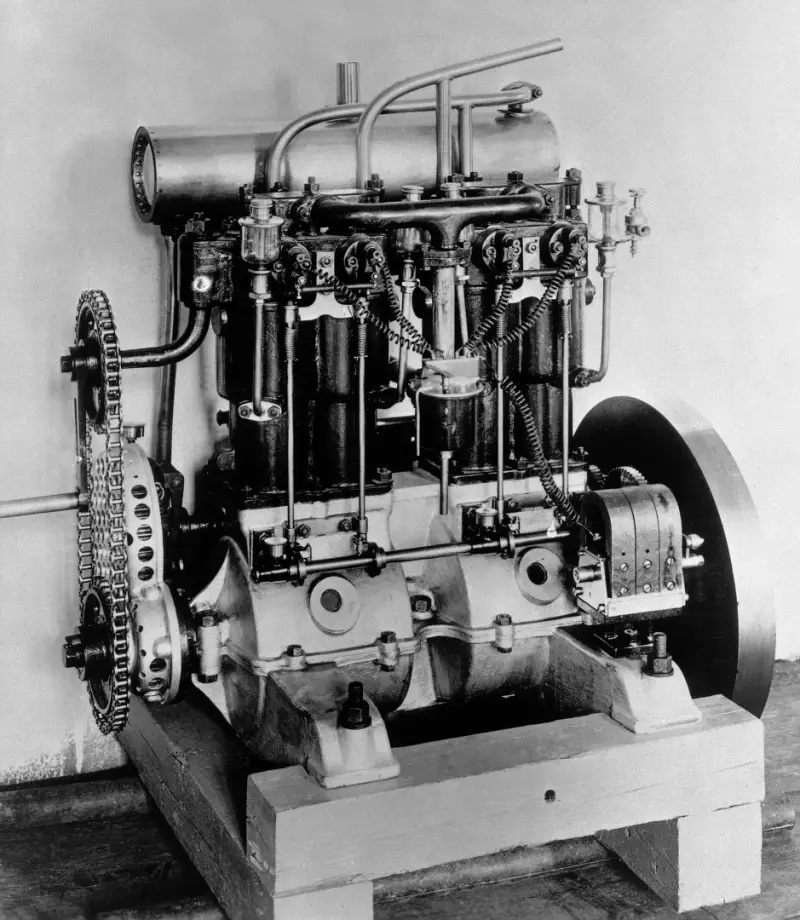
Daimler water-cooled engine with 14,2 hp. pp., installed on the Zeppelin LZ-1 airship. Source: mercedes-benz-publicarchive.com
But although the first three flights of the LZ-1 were not successful in themselves and did not make a positive impression on military observers, the basic technological concept of Count von Zeppelin - a long and rigid metal frame with individual gas cylinders covered with fabric - was reasonable, and it formed the basis for all future zeppelin airships.
Zeppelin LZ-2
Having failed and hit the first bumps with the LZ-1, Zeppelin decides to improve his first model. But since at that time most people were not interested in air navigation and were not ready to invest their money in the Count's experimental machines, he mortgaged his family jewels and family estate. For five long years, Zeppelin worked tirelessly to make people believe in his project - he personally traveled almost the entire country, trying to convey that this enterprise was so colossal in its capabilities and importance for Germany and the world that it should be substantially supported.
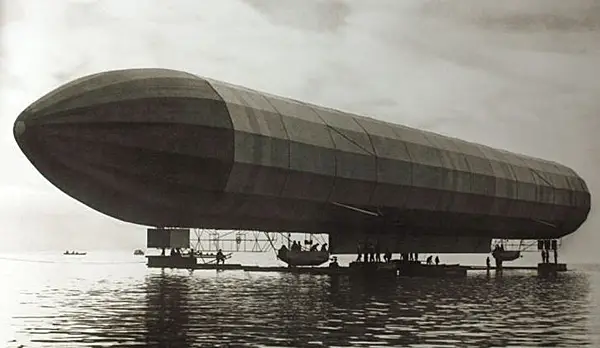
Zeppelin LZ-2
However, Ferdinand von Zeppelin still had the support of the King of Württemberg and several former business partners who provided him with funds, including the company's founder Daimler Motor Company Gottlieb Daimler, and Carl Berg, also an aeronaut and company owner Lüdenscheid - a pioneer of the aluminum industry, who saw great prospects for themselves in this new industry. Thus, having received serious support, in 1905 the 67-year-old count managed to begin construction of the second rigid-hull airship - LZ-2.
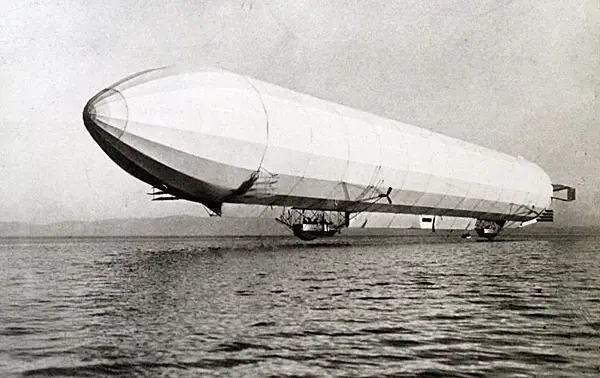
Zeppelin LZ-2 airship on Lake Constance, 1905
Note. Carl Berg (1851–1906) was an entrepreneur and airship builder who was one of the first to realize the advantages of the new metal, aluminum, as a lightweight building material, and the company he created, Lüdenscheid, became the leading aluminum production company in Germany.
Before the advent of duralumin (a durable alloy containing copper, magnesium and manganese), Carl Berg's company developed and supplied aluminum for all Zeppelin airships. Having first seen the metal at the World's Fair in Paris in 1889, Berg immediately recognized its business potential and became the main "responsible" for the introduction of aluminum into the German economy in the 1890s..
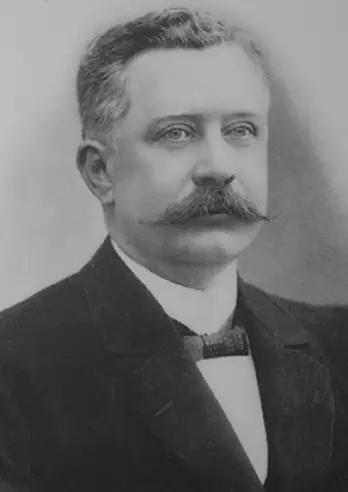
Karl Berg (1851–1906) – Germany's aluminum king
Zeppelin completed work on the new airship design in the fall of that year, working continuously day and night, making important changes to the original design, strengthening and at the same time lightening its structure, significantly increasing the efficiency of the steering apparatus.
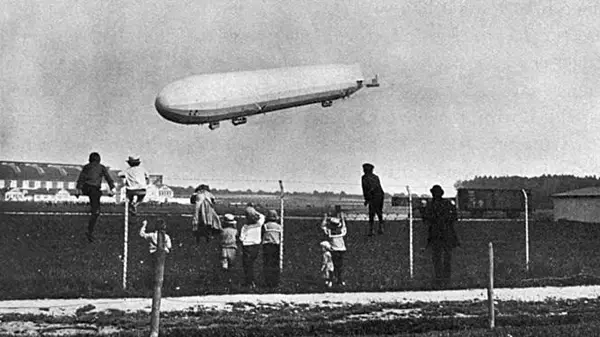
Airship Zeppelin LZ-2
Although Count Zeppelin's second airship was an improvement over the LZ-1, it still did not include basic design elements that were later recognized as important to the device's stability and controllability in flight, such as vertical and horizontal tails. But nevertheless, the LZ-2 did represent a significant technical advance, largely thanks to the doctor of technical sciences engineer Ludwig Duerr.
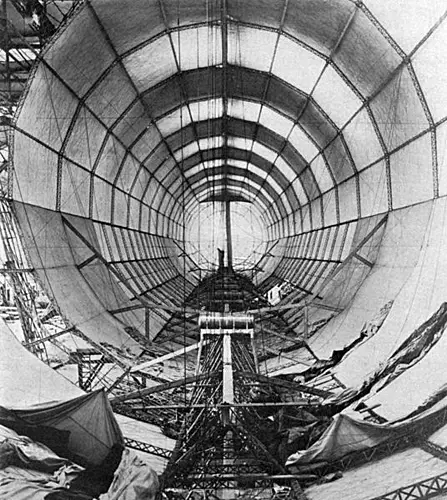
Interior view of the LZ-2 airship, showing construction of the rigid frame. Gas cylinders are not yet inflated
The weak tubular rigid structures previously used on the LZ-1 were replaced by a triangular profile, which provided a dramatic increase in rigidity and strength of the entire structure. These triangular profiles would now be used on every subsequent Zeppelin airship, and Ludwig Duerr would remain chief engineer, designing every ship Zeppelin built after LZ-2.
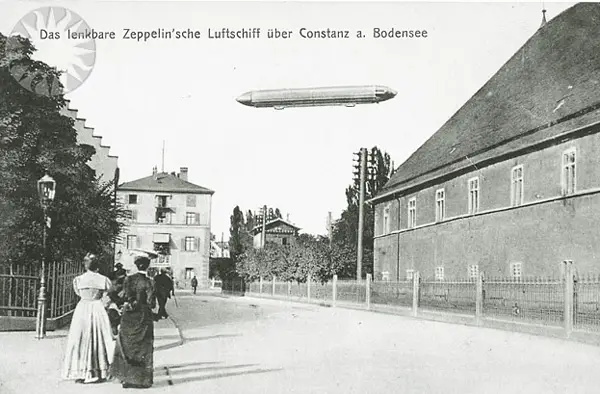
Two women watch the flight of the LZ-2 airship. Source: Smithsonian Institution
Note. Ludwig Dürr was the chief designer of all the airships built by Zeppelin, with the exception of the very first airship LZ-1, which he also helped build. Count Ferdinand von Zeppelin appointed Dürr as his chief designer when the first
Count engineer Hugo Kubler, who designed the rigid LZ-1, refused to fly on the airship he himself created.
After Zeppelin was forced to dismantle its first ship and cease operations due to lack of funds in 1900, Dürr was the only employee who continued to work for Zeppelin, remaining with Zeppelin until 1945. In addition to his work as a designer, Dürr also trained as an airship pilot and later commanded the LZ-5, LZ-6 and LZ-7 Deutschland Zeppelins. Died in January 1956.
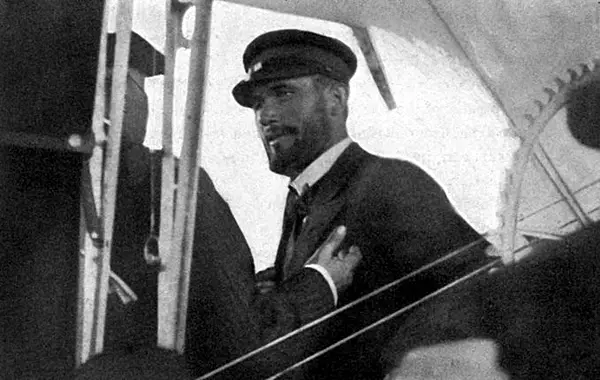
Dr. Ludwig Duerr, Chief Engineer at Zeppelin
LZ-2 made its only flight on January 17, 1906. At an altitude of 427 meters, the airship encountered strong winds, the engines failed, and the crew had to make an emergency landing near the town of Kisslegg, near the border with Austria, in the Allgäu mountains. While they were repairing the engines, a strong wind hit the airship, and it was so badly damaged that Count Zeppelin, with a heavy heart, was forced to order its dismantling.
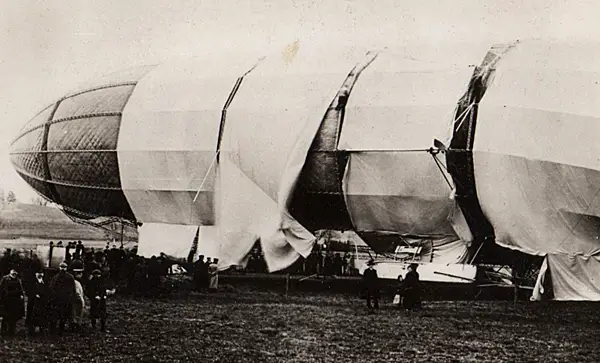
Dismantling of the airship LZ-2
This accident caused a storm of newspaper coverage around the world, but it was not due to a structural defect or poor design of the airship. Zeppelin subsequently explained that he could have survived the storm in the air if his engines had worked. But be that as it may, this time LZ-2 was still a success, and the government decided to give Zeppelin half a million marks for the further continuation of its work.
Note. LZ-2 (Luftschiff Zeppelin-2) had a length of 126,19 meters, a diameter of 11,75 meters, and the volume of spherical cylinders was 10 cubic meters. On this airship, Zeppelin replaced the 370 hp engines. s., used on the LZ-14, to new Daimler piston engines with a power of 1 hp. With. (85 kW), which gave the LZ-62,5 sufficient speed for maneuvering. The maximum speed was 2 kilometers per hour. The airship was designed to rise to 40 meters and carry a payload of 850 tons.
Zeppelin LZ-3
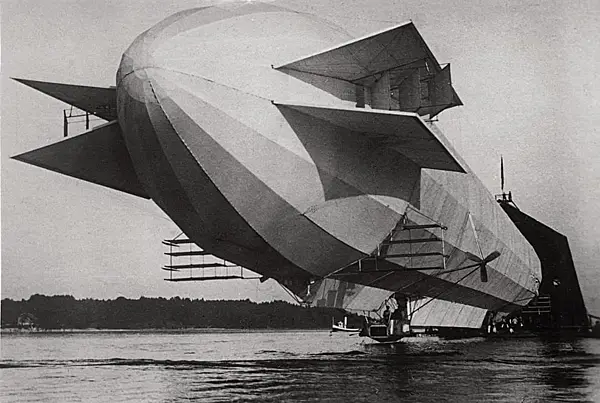
Zeppelin LZ-3
But everyone thought that the count’s dream was completely shattered, and he suffered another failure, but Zeppelin this time did not agree with public opinion, and already in April of the following year in Friedrichshafen he launched his third airship, having invested his entire your enthusiasm and latest resources.
The new airship that was built was exactly the same as the one that was destroyed in the Allgäu mountains, with the exception of the stabilizers at the stern, which were a biplane horizontal tail with three rudders on each side, designed to provide the necessary pitch control and stability. And it became the first truly practical airship built by the Count!
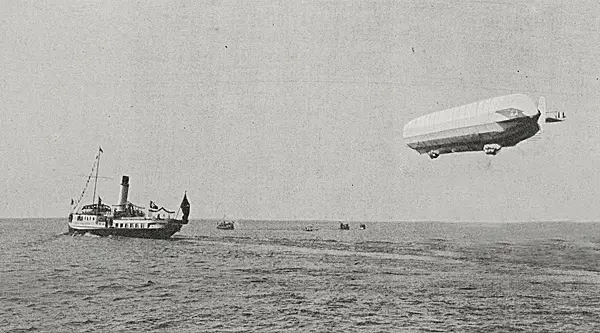
Airship LZ 3 accompanied by a boat with members of the Reichstag on Lake Constance
Each LZ-3 flight lasted several hours, and the first flights with this airship were an immediate success. Zeppelin flew it over Lake Constance, making wide circles and maneuvering under his complete control, which is remarkable given its size. The airship also showed excellent speed, reaching 40 kilometers per hour.
Not only that, but the LZ-3 also demonstrated certain improvements in range and payload, resulting in longer, and most importantly, reliable flights, including a brilliant 1907 flight of eight hours over 350 kilometers!
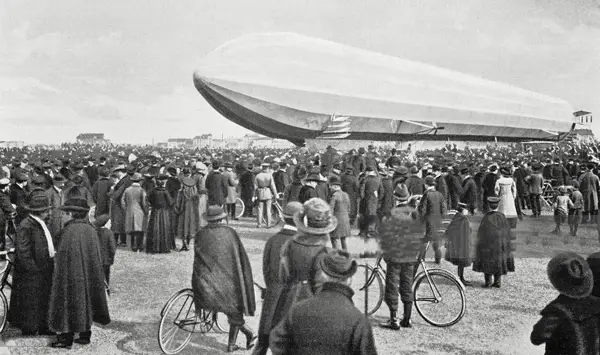
Arrival of the airship LZ-3 at the Oberwiesenfeld airfield in Bavaria
The success of this airship brought Zeppelin and his team their first public recognition, after which the German government offered the inventor a new floating hangar, much larger than the old one, which would allow him to improve his experiments.
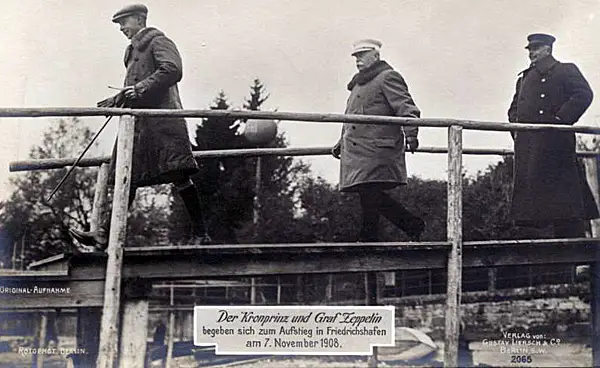
Crown Prince Wilhelm zu Besuch with Count Zeppelin in Friedrichshafen. 1908
The LZ-3 was later purchased by the German army and was used until 1913. But before being purchased by the army, the airship made many flights and carried a number of famous and influential passengers, including the Crown Prince of Germany.

Prince Egon of Fürstenberg and Kaiser Wilhelm II inspecting the airship at Donaueschingen Castle
Government Interest and Zeppelin LZ-4
After this, government officials announced their readiness to purchase Count Zeppelin's airships if they met certain requirements, the main of which was round-the-clock flight with a range of at least 700 km, and early next summer the Zeppelin company demonstrated another new model of the airship - LZ-4, several larger in size than its other predecessors, with a total volume of seventeen cylinders containing about 15 cubic meters of hydrogen.
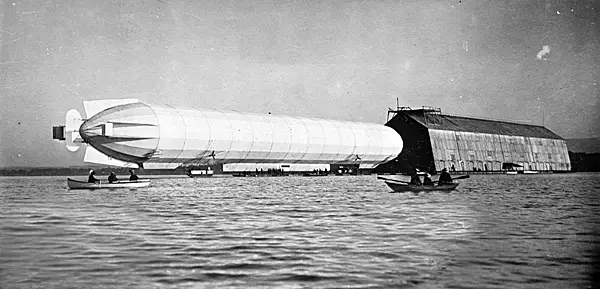
LZ-4 leaves its floating hangar on Lake Constance for a 24-hour test flight
This increased size gave her a carrying capacity of 17 kilograms, which with the increased power of the new Daimler engine (each engine is rated at approximately 000 horsepower) made her a practical, lifting and fast vessel.
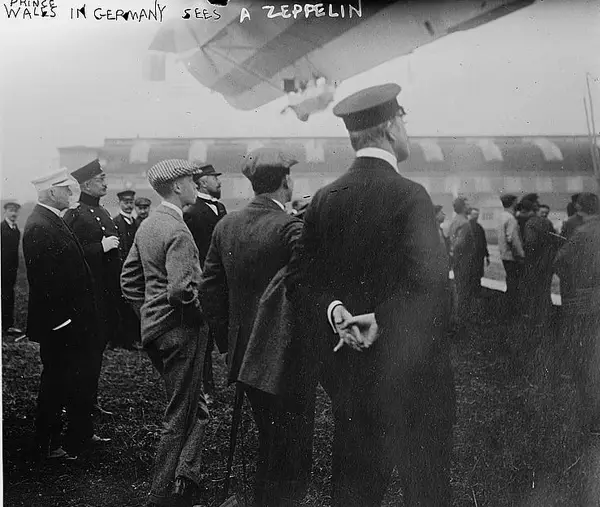
The Prince of Wales inspects a Zeppelin on a visit to Germany. Circa 1910–1913
Count Zeppelin, with an eye to the passenger and military capabilities of the new airship, also built an observation deck into the top of the bow, intended for observing the stars for navigational purposes, which marked the beginning of improvements in design and convenience that would continue continuously.
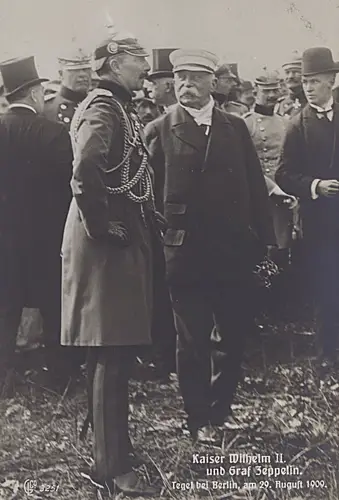
Kaiser Wilhelm II and German airship designer Count Ferdinand von Zeppelin at Tegel Airfield in Berlin, August 29, 1909
Note. During the test flight, the airship flew all the way to Zurich, Switzerland, and then returned back to Lake Constance, covering a distance of 386 km, reaching an altitude of just under 800 meters. This flight attracted many curious people - large crowds gathered along the route to witness the flight of the airship, which flew over German and Swiss cities.
On August 5, 1908, during another test, LZ-4 made an emergency landing in a field near the city of Echterdingen, but a sudden storm tore the airship from its temporary parking lot and it collided with a nearby tree, as a result of which some gas cylinders were damaged and it was completely burned out after a hydrogen explosion. The cause of the fire was later identified as a static charge that arose when the rubberized wool of gas cylinders ruptured.
This disaster occurred in front of approximately 40 to 50 thousand curious spectators and caused an incredible wave of support for Zeppelin's work in the public. Donations from the public poured in, and within 24 hours enough funds had been received to restore the airship, eventually totaling more than 6 million marks, providing Zeppelin with a solid financial base for his further experiments..
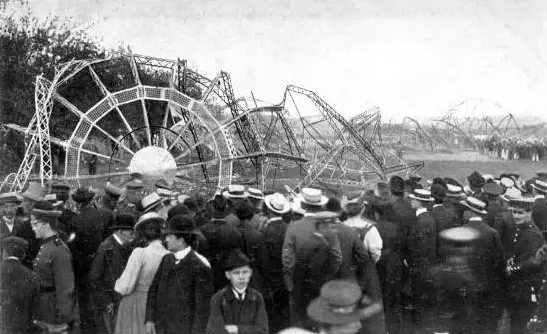
Wreckage of LZ-4 in Echterdingen
Warm financial and political support of the German public and government after the Echterdingen crash allowed the Count to found the Luftschiffbau Zeppelin company in September 1908, where Zeppelin's son-in-law Alfred Kolsman was invited as the company's business manager, and in 1909 the famous German journalist Hugo Eckener, who wrote extensively about airships Zeppelin, joins the company as director of public relations.
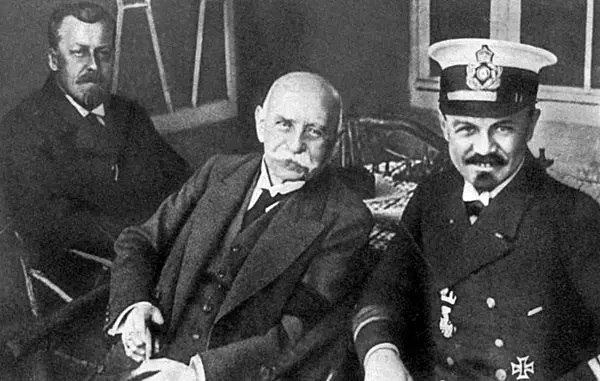
Count Zeppelin, Dr. Ekener and Captain Strasser (chief of the naval aviation). On the occasion of the Count's last visit to the airship harbor in Nordholz
Soon Kolsman founded DELAG, Deutsche Luftschiffahrts-Aktiengesellschaft (German Airship Transport Corporation) as a subsidiary of the Zeppelin Company to commercialize Zeppelin travel by providing passenger services.
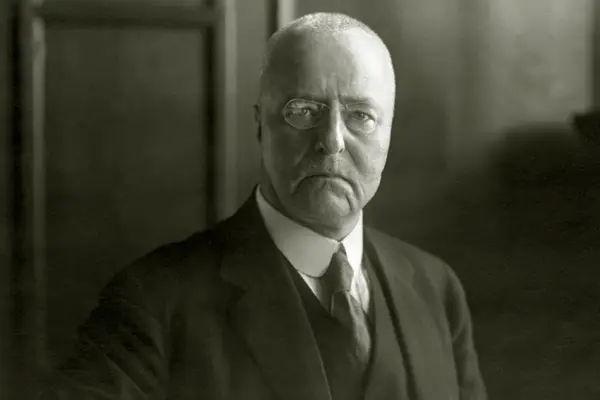
Alfred Kolsman, General Manager of Deutsche Luftschiffahrts-Aktiengesellschaft
After such successes, the airship industry in Germany takes the lead and begins to develop at a rapid pace, and besides, it also gives direction for the development of the aluminum industry! More and more new developments of the count found their application not only for military purposes, they were also used for transporting goods and transporting people.
Zeppelins in World War I
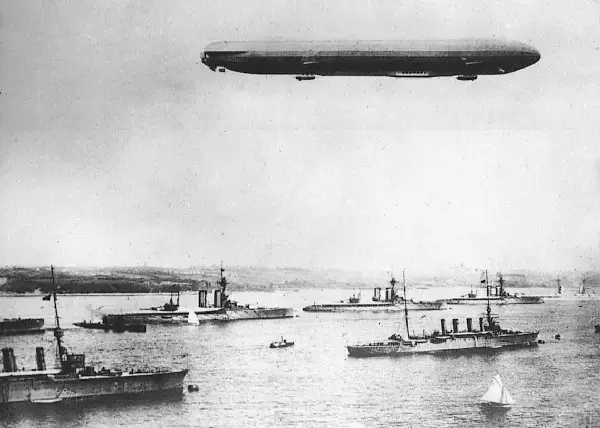
A Zeppelin flies over Kiel harbor during maneuvers during the First World War.
The German army and navy saw great potential in airships not only for long-range reconnaissance - flying over the enemy’s defense line far beyond the range of artillery fire, they could also carry out bombing attacks on the enemy’s rear. By the beginning of the First World War, the Kaiser's army had the largest and most powerful fleet of combat airships, each of which could reach speeds of about 130 km/h and carry up to two tons of bombs, and since the Western Front was firmly entrenched in the trenches and found itself in a military stalemate, they decided to use them against the rear of Britain - its cities and towns.
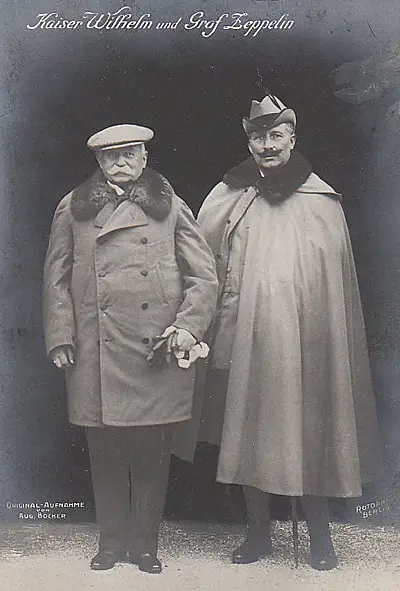
Count Ferdinand von Zeppelin and Kaiser Wilhelm II
Note. Sausage skins, made from animal intestines, served as ideal gas bags for zeppelins. The intestine became so important to the German war effort that sausage production was banned in Germany for a time.
Raids on Britain. Until the twentieth century, the civilian population of the British Isles practically did not suffer from wars, since previous wars almost did not touch the shores of Britain, but the outbreak of the World War was to change everything. The first predatory raid of German airships took place in January 1915 on the seaside towns of Norfolk - Great Yarmouth and King's Lynn.
This air raid was the first in which the victims were not military personnel, but civilians going about their daily lives. As a result of this raid, morale among British civilians fell due to the risk of further bombing and fears that a German invasion might soon follow.
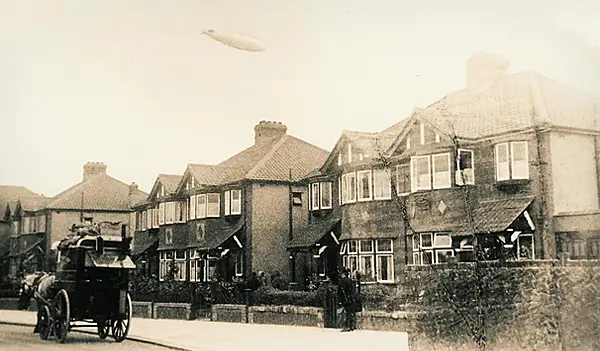
German Zeppelin over a British city
After this raid the German Kölnische Zeitung in her editorial she wrote with delight:
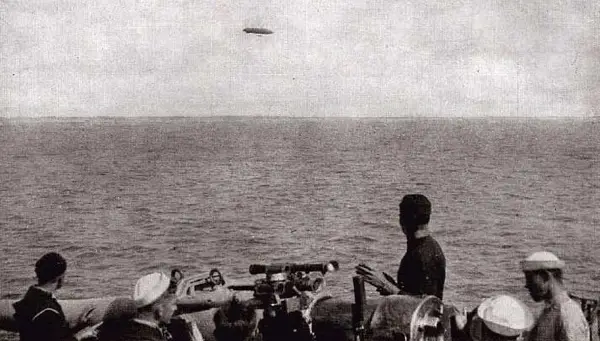
British sailors observe a German reconnaissance airship in the sky above the sea
After the first successful bombings on Britain, new raids followed. On May 31, 1915, an airship attacked the capital of the British Empire - London, as a result of which five people were killed and thirty-five were injured, and on the night of April 2-3, 1916, Edinburgh, Scotland was attacked by two zeppelins.
At first, the Zeppelins seemed invincible, suddenly attacking objects at will and without suffering any losses. Protection against them seemed inadequate, the helplessness of air defense caused panic and fear, and morale among the population fell every time - people were terrified of these sudden raids.

German Zeppelin over London
As these raids show, British defenses were completely inadequate to the threat posed by airships, but by 1916 a number of air defense measures had been introduced on the island - fighter aircraft were directed against them, and many guns and searchlights were deployed. British defense also learned to pick up their radio messages and warn the population of their approach, and to organize the fight against airships, a special central communications headquarters was created, coordinating the work of fighter aircraft, artillery and warning the population.
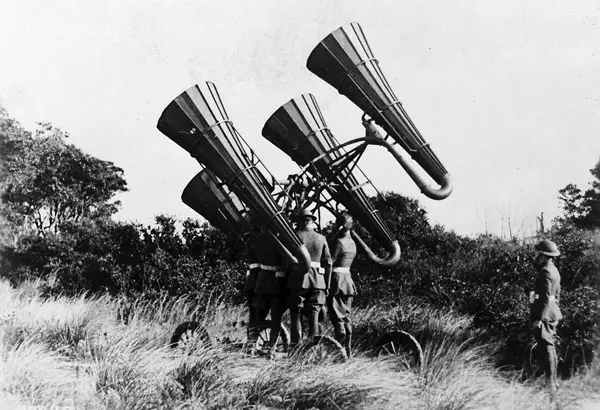
Acoustic locator. It remained in approximately the same form until the beginning of World War II.
Over time, it became clear that the Zeppelins were extremely vulnerable to explosive shells that ignited the hydrogen in the tanks, the Germans began to suffer losses, and airship raids were canceled in 1917, when 77 of the available 115 German Zeppelins were shot down or completely disabled .
Thus, by the end of the war, more than 1 British citizens had been killed in air raids.
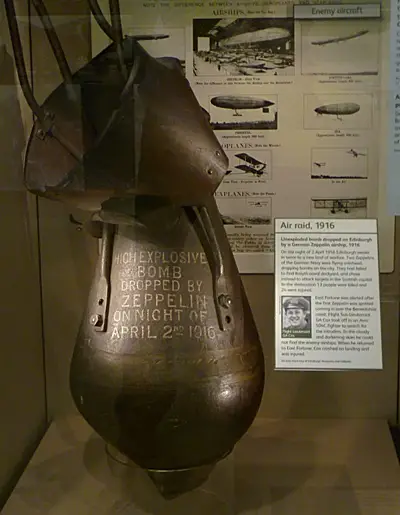
Unexploded bomb dropped on Edinburgh in 1916
Note. At first, British air defenses were largely unable to counter the aerial threat posed by Zeppelins, which flew too high for the fighters of the day to reach and shoot down.
But the Zeppelins had one very serious vulnerability - the flammable hydrogen cylinders used for lifting. Ordinary bullets fired from a fighter's weapon could, of course, penetrate gas cylinders, but something else was required to cause the Zeppelin to catch fire. With the invention of the Buckingham incendiary bullet, which not only pierced gas cylinders but also ignited hydrogen, the threat of Zeppelins over the British Isles was virtually completely neutralized.
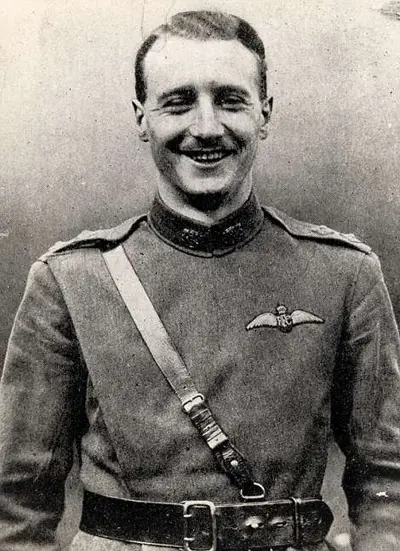
British aviator William Leaf Robinson was the first man to shoot down a German airship over England when it attacked the city on 3 September 1916
So, during the war, as a result of 52 airship raids on Britain, more than 1 people were killed and about two thousand people were injured. Throughout 500 and 1915, airship raids became a common feature of island life. Of the 1916 available Zeppelins used by the German Army, 115 were lost and 53 were damaged beyond repair.
Raids on Paris. From the very beginning of the First World War, the center of the French capital was subject to raids by German aircraft. The first such recorded air attack occurred on 13 October 1914, when two Taube monoplanes dropped bombs in the heart of Paris, causing little damage. But by the end of 1915, the bombing intensified - the Germans began using giant Zeppelins for raids, and on March 20, 1915, two of these Zeppelins dropped bombs weighing 2 kg on the center of Paris, targeting commercial areas.

French police pose with an unexploded bomb dropped by a German airship
But due to poor navigation equipment, the zeppelins often missed their targets, and their raids resulted in relatively little destruction, causing civilian casualties. This was the case on January 29, 1916, when an air attack by a Zeppelin bombed a densely populated and poor area of Paris, killing 23 people and injuring 30.

Bomb crater on Rue Drouot in Paris after a German airship raid
The funeral took place on February 7, 1916, with thousands of mourners lining the streets of Paris as six artillery carriages carried the coffins to the Notre-Dame de la Croix church, with politicians and other dignitaries following behind. The funeral service was conducted by Cardinal Léon Adolphe Hamette (1850–1920) and the Archbishop of Paris, who gave what one British newspaper called a “moving speech”:
In 1917, the Germans replaced the Zeppelins with the more lethal Gotha G. IV fighters.

Crater created by one of the bombs dropped by a Zeppelin on Paris
Flight to Africa. In November 1917, the Zeppelin L-59 was sent to German East Africa (today's Namibia) with medical supplies and ammunition for the German colonial forces besieged there. The Zeppelin L-59 was specially prepared for a long flight - all unnecessary equipment, such as bomb releasers, and weapons were removed from it, and all available space was allocated for cargo.
The new L-59 was longer than all the others, which made room for two additional gas tanks, containing 68 cubic meters of hydrogen, and it could easily carry almost 000 tons of payload. Having only five engines on board, this zeppelin reached an average speed of about 50 km/h!

The Zeppelin L-59 is a naval airship that flew a still unbroken world record non-stop flight of 4 miles from Yambol in Bulgaria to west of Khartoum in Africa and back to Yambol, transporting 225 tons of cargo in 14 hours.
Flying from Germany to the city of Yambol, in the south of Germany's ally Bulgaria, the L-59 was loaded with 9 tons of ammunition for machine guns, 5 tons of medicine and 21 tons of gasoline for engines.
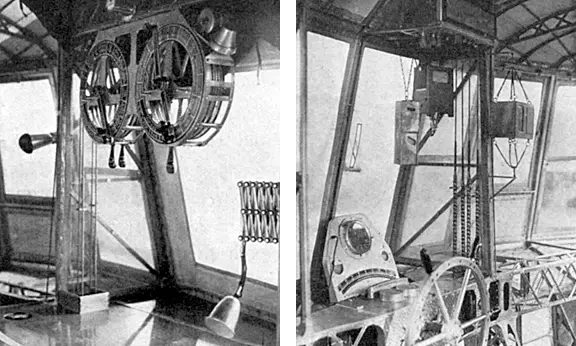
The desk of telegraph operators and navigators (left) and the control stand for the rudder and high-altitude navigation instruments (right)
L-59 sailed from Yambol (southeast Bulgaria) at 9 a.m., crossing northwest Asia Minor, then the Aegean Sea, south of the city of Smyrna (now Izmir), between the islands of Crete and Rhodes and across the Mediterranean Sea by dawn the next day reached the African coast.
And already crossing the Sahara, the military headquarters in Berlin contacted the L-59 by radio and informed the crew that the German colonial troops in German East Africa had surrendered to the British, and the zeppelin, which had covered about 3 kilometers without stopping, turned back, flying high over the Sahara , Asia Minor and the Black Sea, arrived back in the Bulgarian Yambol in less than four days from the moment he left that country, and there was still enough fuel on board for two to three days of flight!
Thus, in November 1917, the still unbroken world record of flying 4 miles non-stop from Yambol in Bulgaria to west of Khartoum in Africa and back to Yambol and transporting 225 tons of cargo in 14 hours was accomplished.
Death of the Count
In February 1917, in good health despite his 78 years, Zeppelin traveled to Berlin to attend an aviation exhibition and during the flight he contracted pneumonia, after which he developed appendicitis, which he was successfully operated on, but later developed pneumonia, and he died in Berlin on March 8 before the end of the First World War.
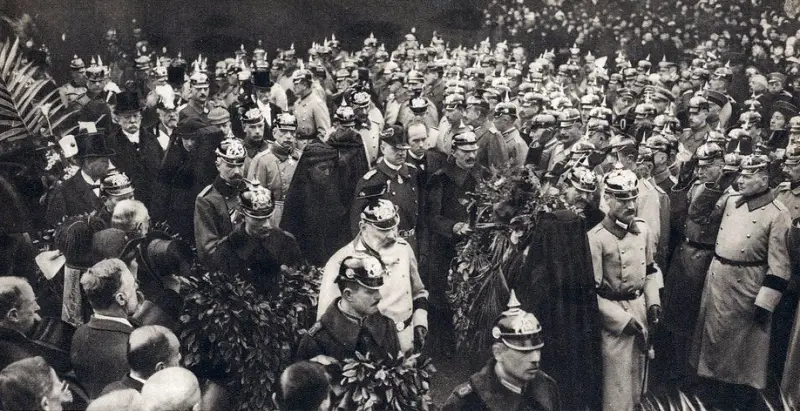
Count's funeral...
Although the count was already mortally ill and old, he still held meetings, lying on the bed in his hospital room, conveying to like-minded people his great dream of transporting goods and passengers on airships, and after his death they continued the work that he left them.
The Count was buried in Stuttgart in the Pragfriedhof cemetery next to his wife Isabella, and airships flying over his grave dropped garlands and wreaths of flowers on his resting place. And although the First World War was still raging, the people considered Zeppelin their national hero and gave him a state funeral with all due honors.
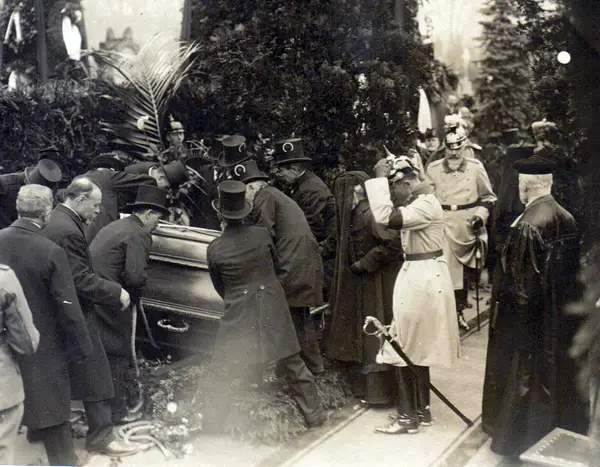
Count's funeral...
On his tombstone, very modest compared to many other tombstones in this cemetery, are written the words of Jesus: Dein Glaube Hat dir Geholfen (“Your faith has saved you”).

A modest tombstone at the Pragfriedhof cemetery in Stuttgart
The Count's Legacy
As already mentioned, Count Zeppelin died in 1917, before the end of the First World War, so he did not witness the temporary closure of the Zeppelin project due to the Treaty of Versailles, nor the second revival of Zeppelin under his successor Hugo Eckener, who made the first in 1929 V stories circumnavigation of the world by airship.
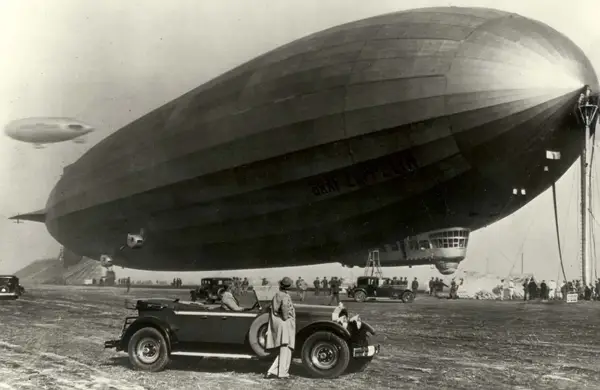
The commander of the famous airship "Graf Zeppelin" Hugo Eckener, who participated in most of its record flights, including the first flight around the world
Note. Dr. Hugo Eckener (1868–1954) was an engineer, commander of the rigid airship LZ-127 "Graf Zeppelin" and manager of the Luftschiffbau Zeppelin company after the death of Count von Zeppelin. The Treaty of Versailles prohibited Germany from building the large Atlantic-crossing airships it wanted to build, so the doctor began lobbying the US and German governments to allow the company to build a zeppelin for the US Navy as part of German war reparations. It was under this theme that the company built the LZ-126, later renamed the USS Los Angeles, which became the oldest rigid airship in service with the US Navy.
The next airship they built was the LZ-127 Graf Zeppelin, which became the most successful rigid airship in the history of airship construction. Ekener was at the helm of the airship on most of its record-breaking flights, including the first intercontinental flight of a passenger airship in 1928, a flight around the world in 1929 and a flight to the Arctic in 1931.
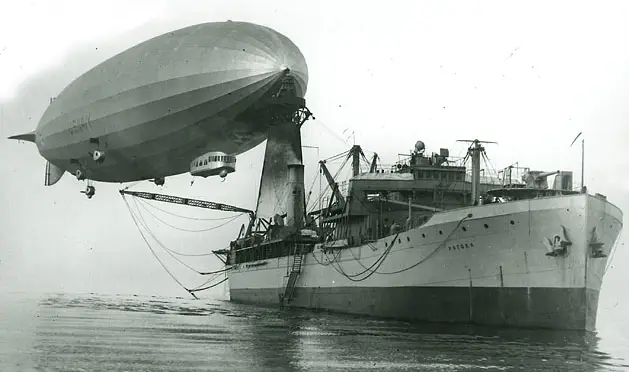
The airship LZ-126, built by Hugo Ecker, later renamed USS Los Angeles, which became the oldest rigid airship in service with the US Navy
In 1915, when the First World War was already underway, Ferdinand von Zeppelin created a new technology company ZF Friedrichshafen (original name Zahnradfabrik), whose precision-made gears and transmissions promised optimal power transfer between the engines and propellers of all Zeppelin airships.
Today, ZF Friedrichshafen AG is the largest mechanical engineering company to emerge from the Zeppelin heritage, widely known for its research and development in the automotive industry, including production technologies such as transmissions and vehicle chassis. Today, the legacy of Count Zeppelin - the company ZF Friedrichshafen AG - has more than one hundred and sixty production facilities in more than thirty countries around the world.
The unfinished aircraft carrier Graf Zeppelin during World War II and two rigid airships were named after Ferdinand von Zeppelin: the LZ-127 Graf Zeppelin, which circled the world, and the LZ-130 Graf Zeppelin II, a copy of the Hindenburg airship, the explosion of which in 1937 marked the demise of airships, after which the government banned passenger transport.
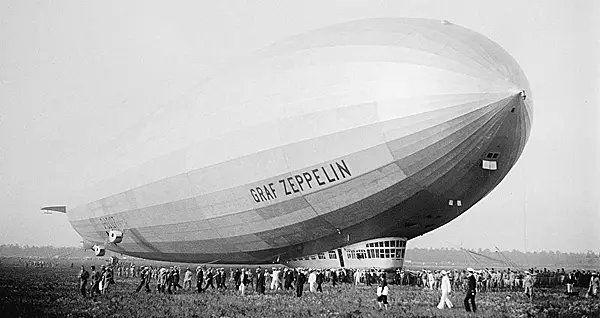
LZ-127 "Graf Zeppelin", which flew around the world in 1929
British rock band Led Zeppelin's name also comes from his airship, and his granddaughter Countess Eva von Zeppelin even threatened to sue them for illegally using their surname during a performance in Copenhagen.
In 1975, Ferdinand von Zeppelin was inducted into the International Air and Space Hall of Fame in San Diego.
Prominent personalities of the time, including Claude Dornier*, Karl Maybach, Count Alfred von Soden-Fraunhofen (from 1921 to 1944, member of the board and technical director of the company) and Alfred Kolsman and Hugo Eckener, already mentioned above, came to Friedrichshafen to work with Zeppelin. It was thanks to Zeppelin that the city of Friedrichshafen on Lake Constance became an important center of technology.
New birth
The first thoughts about whether it would be economically and technically feasible to revive airship travel date back to 1988, when major technological leaps in lightweight metal structures, shell materials, propulsion systems and new control technologies occurred, proving that the new technology of airship travel in terms of technical and economic standards, and most importantly, safety standards, is not comparable to the original technology that existed from the very beginning of the creation of airships.
Note. It will soon be exactly 90 years since the giant airship LZ-129 Hindenburg exploded into a fireball over Lakehurst Air Force Base, New Jersey, on May 6, 1937, killing 36 people who had just completed a leisurely flight across the Atlantic. And although the world has since experienced many much larger aviation disasters, the Hindenburg forever became synonymous with disaster in the public consciousness and brought an abrupt end to the era of the airship.
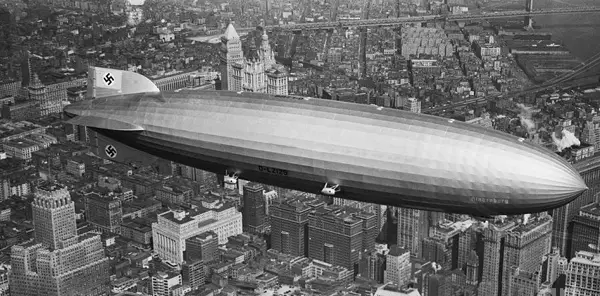
The airship LZ-129 "Hindenburg", which crashed in 1937 in New Jersey
Today's company ZLT Zeppelin Through its owners, Luftschiffbau Zeppelin GmbH and ZF Friedrichshafen AG, it has direct origins in a company founded more than a century ago by aeronautics enthusiast Count Ferdinand von Zeppelin (1838–1917) to design and manufacture airships. It was here in Friedrichshafen that the idea of Zeppelin was born and it was here that the first Zeppelin LZ-1 was created, and it is the seat of modern technology and the starting point for the creation of airships and other technology companies related to metal structures.
And now, after more than six decades have passed (if you count from the date of the disaster of the airship LZ-129 "Hindenburg"), the German Federal Agency issues a certificate for a new and modern airship of the type Zeppelin NT, and after a feasibility study, research and development, on September 18, 1997, the Zeppelin NT finally took off for its maiden flight from an anchor mast in front of the exhibition center in Friedrichshafen. And in August 2001, Zeppelin NT began commercial flights!
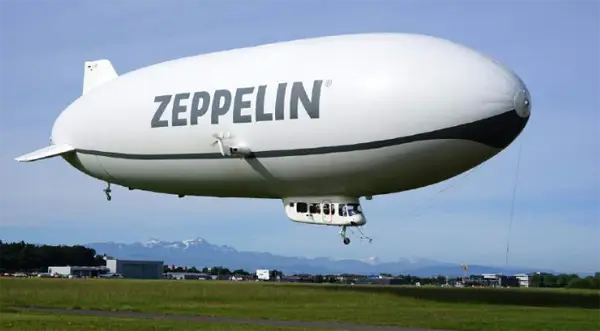
The Zeppelin NT airship is a direct successor to the first airships of Ferdinand von Zeppelin
Note. Zeppelin NT (NT – Neue Technologi, German for “new technology”) airships, like the first Zeppelins, have a rigid internal structure made of modern composite materials and aluminum (which reduced the overall weight by 50 percent compared to previous rigid ones). airships), using an innovative propeller drive concept with vector thrust and a fly-by-wire flight control system, which significantly expands the application limits of previous airships.
And to control the airship, only two people are required. The Zeppelin NT class airships are 75 meters long, 14 meters in diameter and 19,5 meters wide. They reach a maximum speed of 125 km/h and can fly non-stop over a distance of 900 km. The Zeppelin NT can carry 12 passengers plus 2 crew or 1 kg of cargo and can take off and land vertically. The NT airship uses non-flammable helium as lifting gas. Since 900, the Zeppelin NT has been in mass production.
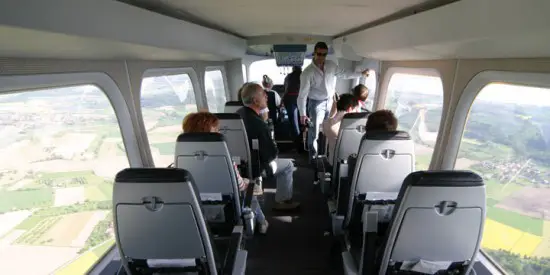
Passenger cabin of Zeppelin NT. Photo: ZLT Zeppelin Luftschifftechnik GmbH
Zeppelin NT is used for recreational tours, as observation platforms for photographers and television commentators covering major events, and for research missions for environmental observations, troposphere studies and natural resource exploration.
Information
*Cunard China. The first screw steamship built and owned by the British company Cunard Steamship Line Shipping Company, which carried out regular mail services across the Atlantic.
*Frame. A transverse structural element of an aircraft, made in the form of a profile in the shape of a circle or oval and providing rigidity to the cross section of the fuselage. Frames can be normal or reinforced. The latter serve to take on large loads and place on them attachment points for other structures to the fuselage.
*Stringer. A longitudinal structural element of an aircraft, which consists of extruded profiles rigidly connected to the fuselage frames. Together with the frames, it makes up the strength structure of the fuselage.
*Pitch. The angle of inclination of an aircraft at which its longitudinal axis changes its direction relative to the horizontal plane. Pitch determines the position of the aircraft in space, affects the lift of the wing and, together with yaw and roll, refers to one of the three Euler angles.
*Claude Dornier (1884–1969). Having joined the Luftschiffbau Zeppelin company in 1910, he worked in the experimental department of F. Zeppelin's airship-building enterprise. Dornier was researching the aerodynamics of an all-metal rigid airship. Soon he designed an airship for transatlantic routes. This impressed Count von Zeppelin, and in 1914, Count Zeppelin created a subsidiary company, Zeppelin Werke Lindau GmbH, in Friedrichshafen specifically to design aircraft based on Dornier’s original ideas.
Sources:
1. Zeppelin Museum (zeppelin-museum.de).
2. Roman Koster. Zeppelin, Carl Berg, and the Development of Aluminum Alloys for German Aviation (1890–1930).
3. Materials of Russian and foreign newspapers and technical magazines.
Information